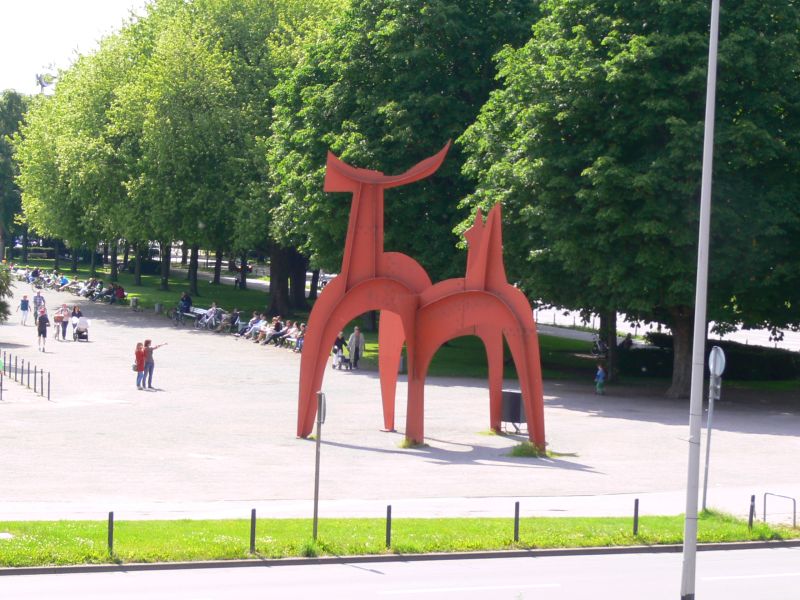
On this wooden board, you can see my tools. There are a few stencils I cut out of plastic boxes. The wooden board is important because I push the pins hard through the cloth layers.
There is an Estonian pin cushion, wool embroidery, and the neon green thread which I use for the whole quilt. The red-framed diamond is one of four corner pieces which will be joined into the flying geese rows.

The side rows of flying gees are just being made.
The bottom picture shows the quilt at the present state.
In the lower right corner, you can see part of an older mini quilt.
Some other quilters in a quilt group saw this piece and suggested that also this one should be quilted. This is not the tradition of korak; and although I love quilting and the result and its feel, I will not do it this time. The reason is: The Korak method is based on doubled scraps. A korak naturally becomes more sturdy and stiffer than a conventional quilt top. I quilted the latest one, and it became so stiff that you can form it into sculptures that won't collapse, and it weighs a ton. I'm working on a lighter and more flexible piece this time, hoping it will be more comfy as a sleeping cover.
 On this wooden board, you can see my tools. There are a few stencils I cut out of plastic boxes. The wooden board is important because I push the pins hard through the cloth layers.
On this wooden board, you can see my tools. There are a few stencils I cut out of plastic boxes. The wooden board is important because I push the pins hard through the cloth layers.























